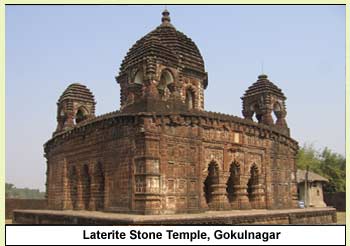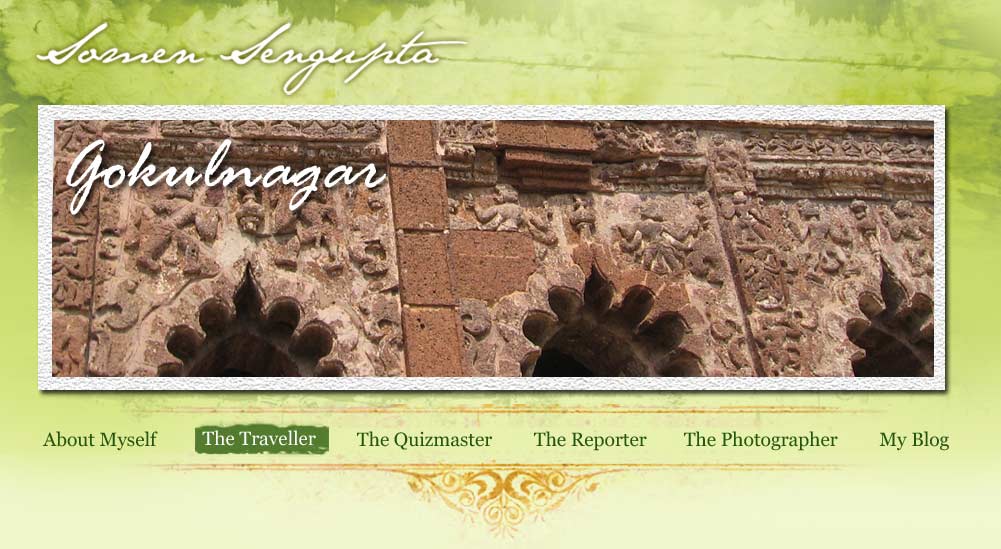| Temple tourism in Bengal revolves around terracotta structures but there is at least one temple made of laterite stone that matches the best in architectural finesse. Located at Gokulnagar, a small village near Salda town in Bankura district, the large stone edifice, with an even larger natmandir, is a treasure trove for those in love with the past.t.
The village is best reached via Bishnupur. The imposing black and brown structure of the temple, standing like a sentinel over paddy fields, will come into view long before you reach Gokulnagar.
Not much has been written about the temple in books. Legend has it that over a thousand years ago, a ruler of the area built three giant temples within a radius of 4km, dedicated to Gokuleshwar, Gandheshwar and Bhubaneshwar. Only the Gokuleshwar temple has survived.
The most popular theory is that king Chandra Malla had built the stone temple in 1460. Another school of historians is of the opinion that it came up in the 17th century.
The writing on the temple’s foundation stone is no longer legible. So there is no way to easily determine when the temple came up.
The pancharatna temple has three arched gates on each side. The 64ft central tower is surrounded by four smaller ones. The style of construction is similar to that of the Shyamaraya temple of Bishnupur. The Gokulnagar temple probably inspired the Bishnupur one, feel some historians.
The main tower has eight faces,with a carved horse at each corner. The complex spreads across 23,500sq ft.
The walls depict the 10 avatars of Lord Vishnu. While the eastern wall is embellished with raslila motifs, mythological incidents are sculpted on the south wall. The western wall sports a statue of the Baman avatar.A stone staircase leads to the roof of the temple. There are places designated for kirtan and Gita recitals in the natmandir.
The structure had drawn Rakhaldas Bandopadhyay, the archaeologist who discovering Mohenjodaro, to Gokulnagar in 1923. He was so impressed by the temple that he met the then district magistrate of Bankura and requested him to preserve it. Soon after, he had written on the village temple in a Bengali magazine called Prabashi.The plunder of the temple continued till the Archeological Survey of India took over its maintenance in 1996. Old timers in the village recall how stone slabs from the temple were carried away by contractors for building a road in the area in the early 1970s.
The idol of Lord Krishna housed in the temple has long been removed to the Bishnupur royal palace. A photograph of the idol is worshipped throughout the year. The complex is abuzz with activity during Holi and rasjatra, when the deity is brought to the temple for five days.
Going
Gokulnagar is well connected by rail and road. Catch Rupashi Bangla, which leaves Howrah station in the morning, and hire a car from Bishnupur station. Buses are also available from the station. The ride takes about 40 minutes.
Staying
There is no place to stay in Gokulnagar. Hotels in Bishnupur are the only options. Carry water and food with you.
This article was published on 16th January, 2011 in The Telegraph
Click here to view the original article
|



